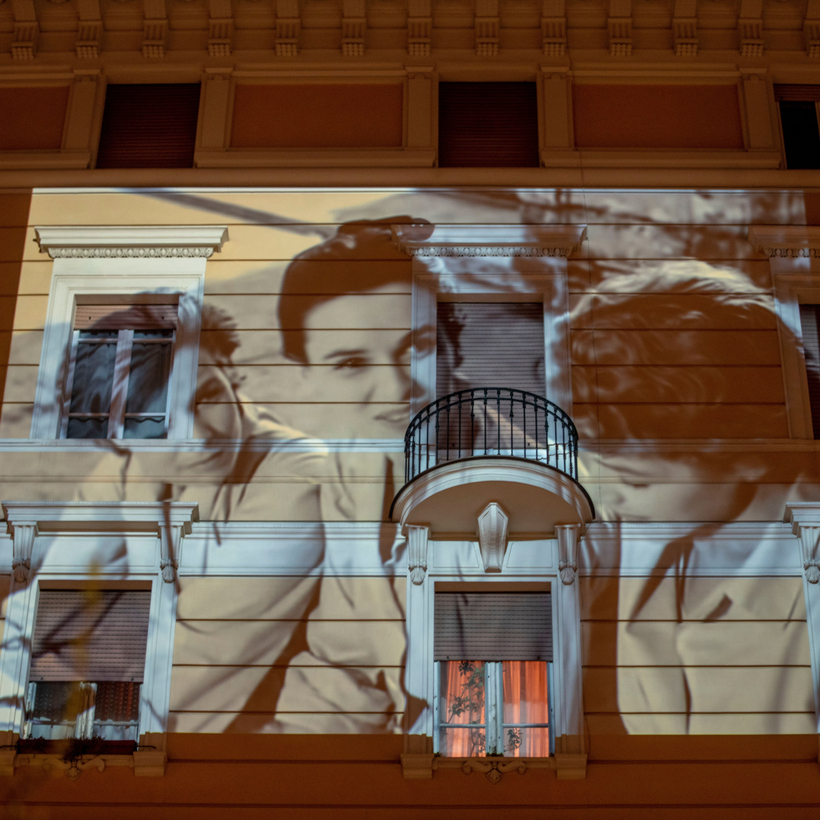Enormous human disasters have seemed to mark my writing career of the last 25 years. It was tragically, coincidentally, right after September 11, 2001, that I began work on the book I’d just sold to HarperCollins—The Great Mortality: An Intimate History of the Black Death, the Most Devastating Plague of All Time.
I had been drawn to the subject through following an AIDS patient for two years in the early 1990s, when effective H.I.V. treatments were rare, for a book I was writing on experimental medicine. It was then that I saw the power of an unfettered pandemic firsthand, at least as we knew it then: the man lost a former lover, three friends, a work colleague, and two dozen acquaintances in fewer than 10 months. The year before I finished that book, 1994, Jonathan Mann, a professor at the Harvard School of Public Health, presciently warned that “the history of our time will be marked by recurrent eruptions of newly discovered diseases.” Three years later, The New England Journal of Medicine reinforced the prediction: “The threat from emerging infectious diseases is not to be taken lightly.”
La Moria Grandissima
So, I set out to explore the Black Death—the Asian-, European-, and British Isles–infecting epidemic sparked by the bacterium Y. pestis on a rodent that would go on to kill approximately 25 million of the European continent’s then 75 million people—a 700-year-old precursor to the landscape we were then living in, which was marked by Ebola, SARS, Marburg disease, and avian flu. The Great Mortality was published in 2005; I followed it in 2012 with my book The Graves Are Walking, on another killer of thousands, the Irish famine, and, in 2015, Never Surrender, on Churchill during the early years of World War II—a man-made disaster that killed more people than any other event in human history. I have just finished a book, Saving Stalin, on the battles of that singularly life-costing war.
But I am hardly inured to large-scale tragedy. The global coronavirus pandemic and its dangerous grip on our country seem to me as startlingly unprecedented, frightening, unprepared for, and presidentially mismanaged as they do to most others, far beyond anything we have known or researched.
“The history of our time will be marked by recurrent eruptions of newly discovered diseases.”
Yes, the Black Death pandemic of 1347–49 was horrendous. The speed and volume of the catastrophe was so intense that a shoemaker in Siena wrote, with no exaggeration, “This is the end of the world.” In the cypress-lined roads of Italy, one out of two faces seemed to suddenly disappear. “Where are our dear friends now?” wrote the poet Francesco Petrarch. “What lightning bolt devoured them? What earthquake toppled them?… There was a crowd of us, now we are almost alone.”
The warnings we are getting now, repeatedly and insistently, about the need for social distance and the perils of even momentary contact, were all there in the autumn of 1347, when ships full of plague-stricken and delirious Genoese men brought the disease south to Sicily; the carriers were so contagious that, as one diarist put it, “if anyone so much as spoke with one of them, he was infected.”

Like cringeworthily crude, early-modern-age versions of today’s warranted fears—about testing, ventilator and respirator shortages, and I.C.U.-bed and health-care-provider inadequacies—the crowded cities in 1348 and 1349 were filled with collection carts winding through the streets at dawn on their way to plague pits, in which the dead were piled on top of one another like lasagna and desperate crowds bent over municipal latrines, inhaling noxious fumes to try to inoculate themselves against the disease.
From Merde to Hand Sanitizer
Our Purell-filled, antiseptic modern times are very different from the mid-1300s, when, though medieval Germans raved that “the city makes men free,” urban spaces were such cesspools that five Parisian street names were inspired by the word merde: Rue Merdeux, Rue Merdelet, Rue Merdusson, Rue des Merdons, and Rue Merdiere. And Dr. Anthony Fauci’s clear explanations regarding the coronavirus represent a great advance over the days when a renowned medical faculty pronounced the cause of the pandemic to be “an unusual conjunction of Saturn, Mars, and Jupiter at one on the afternoon of March 20th, 1345.” (Let us pause for a moment and hope that Fauci is not silenced by President Trump, with whose desire to put sheltered-in-place America “back in business” the esteemed virologist politely but authoritatively disagrees.)
But, as radically different as those days were from ours, I’ve recently been struck by some similarities. As Voltaire once observed, “History never repeats itself, but man always does.”
The warnings we are getting now were all there in the autumn of 1347.
For example, then and now women have had to meet and challenge sexism to become medical eminences, their authority often co-opted by ignorant men. Ambassador Deborah Birx, who was a physician-colonel in the army, an immunologist of note, and the Senate-confirmed global AIDS coordinator under President Obama, is now heading up this administration’s coronavirus response. Yet she must report to President Trump, whose failures in responding appropriately to the pandemic are clearly known. Birx has an analogue in the 14th century: Parisian healer Jacqueline Felicie, a noted physician who was refused licensure by the Paris Medical Faculty, largely because of her gender, and removed from service. Not exactly the same thing as a respected female scientist having to deferentially say, as she did at Thursday’s White House press conference, that we “owe it to the president” (who has said he takes “no responsibility at all” for the pandemic) to get the number of cases right—but close.
Another similarity between then and now is the uptick in xenophobia and the scapegoating of ethnic minorities. Trump now calls the coronavirus “the Chinese virus” at every news conference. Reports in The New York Times and elsewhere have disturbingly detailed acts of anger and violence at random U.S. citizens of Asian appearance. For an analogy, take the stunning wave of anti-Semitism that swept Europe during the Black Death, equal in criminality if not in numbers to Hitler’s work. In January 1349, Basel burned its Jews on an island in the Rhine; just a month later, Strasbourg marched its Jews to a local cemetery and burned them.
Then there’s the “democracy” of that pandemic—and ours. You could be an impoverished peasant or a member of the royal family and still contract the plague. In 1344, King Edward III of England mourned his 15-year-old daughter, Princess Joan, who died from the plague. Flash to the present: both Prince Charles of England and Prince Albert of Monaco recently announced they had tested positive for the coronavirus. And while we don’t have royalty in America, the early coronavirus declarations from Tom Hanks and Rita Wilson, Idris Elba and wife Sabrina, and Senator Rand Paul—and, now, Boris Johnson, as well as those of the wives of the prime ministers of Canada and Spain—have shown us that the most privileged, protected, and private-jet-ferried have just as high a chance as the rest of us of being infected.
A 1300s Meghan Markle
In the midst of it all, people in the Middle Ages proved just as fascinated by celebrity and scandal as those in our Twitter- and Instagram-obsessed present. The level of buzz generated by Harry and Meghan, Kim Kardashian West, and Harvey Weinstein put together (yes, I know, it’s an odd conflation, but I’m a history writer, not a Page Six cognoscente) can be compared, in the days of the plague, to the trial of beautiful, blonde, 23-year-old Queen Joanna I of Naples and Sicily (“Exquisite and enchanting,” declared Petrarch; “Fair and godly to look at,” said Boccaccio) for the murder of her 18-year-old husband, Prince Andreas of Hungary, who had been found hanging from the balcony of their Neapolitan abbey three years earlier.
At first the young queen had seemed inconsolable (“My murdered man!” she’d wailed), but soon evidence of her complicity in the murder mounted up, eventually becoming seriously incriminating. (The fact that she was rumored to be carrying the baby of another man at the time of the murder did not help her cause.) On March 15, 1348, the residents of Avignon—from servants to noblewomen—stopped thinking of fear and death for a few moments to watch the lovely murder defendant being ferried to trial in the papal court as if to her own coronation. The royal beauty was roundly exonerated by Pope Clement, who declared her his “blameless and beloved daughter.” (A few months later it was revealed that Clement had purchased the whole of Avignon from the exonerated queen for a very low price, if any price at all.)
People in the Middle Ages proved just as fascinated by celebrity and scandal as those today.
The most inspiring and surprising thing I learned about the Black Death was the resilience and kindness of many people in the midst of its ceaseless ravages. In Marseille, businessman Bondavin de Draguignan told a man who’d lost everything in the plague and who owed him money that if he worked in his garden to pay off his debt he would give him the garden itself. In Avignon, France, a group of men risked their own health by feeding the hungry and swabbing the oozing pustules of the sick, as well as bandaging gangrenous feet. And in Avignon, one surgeon, Guy de Chauliac, continued to treat patients even though treating them made him ill; he was near death for six weeks.
This was what we would today call an “inclusive” list of good-deed-doers: de Draguignan was a Jew, the selfless men were monks, and de Chauliac was a scholarship medical student. At this fraught moment in the coronavirus’s imminence in our lives, the heroism of health providers, public officials, pharmacy and restaurant workers, school officials, and ordinary friends and family members reaching out to one another is deeply heartening. Voltaire’s observation about human nature feels, happily, correct.
John Kelly is a writer living in New York City


